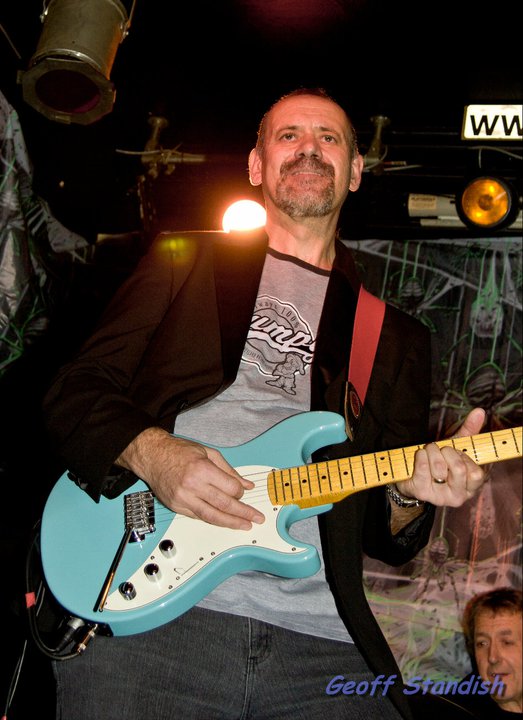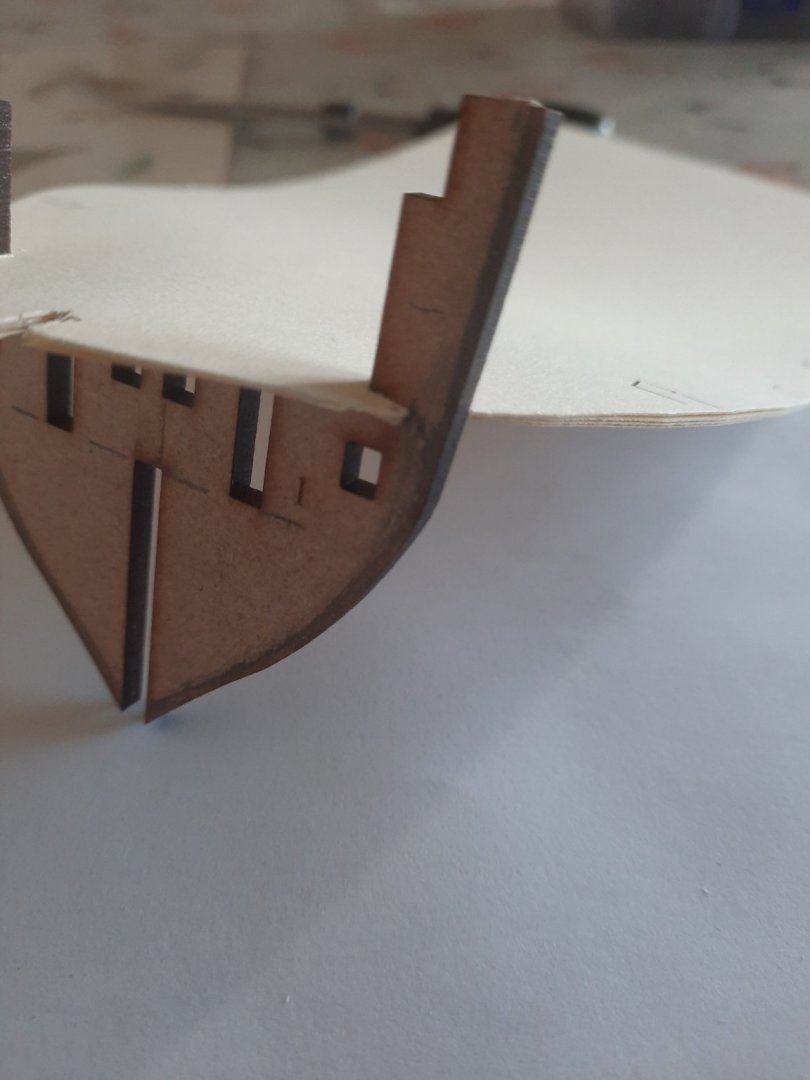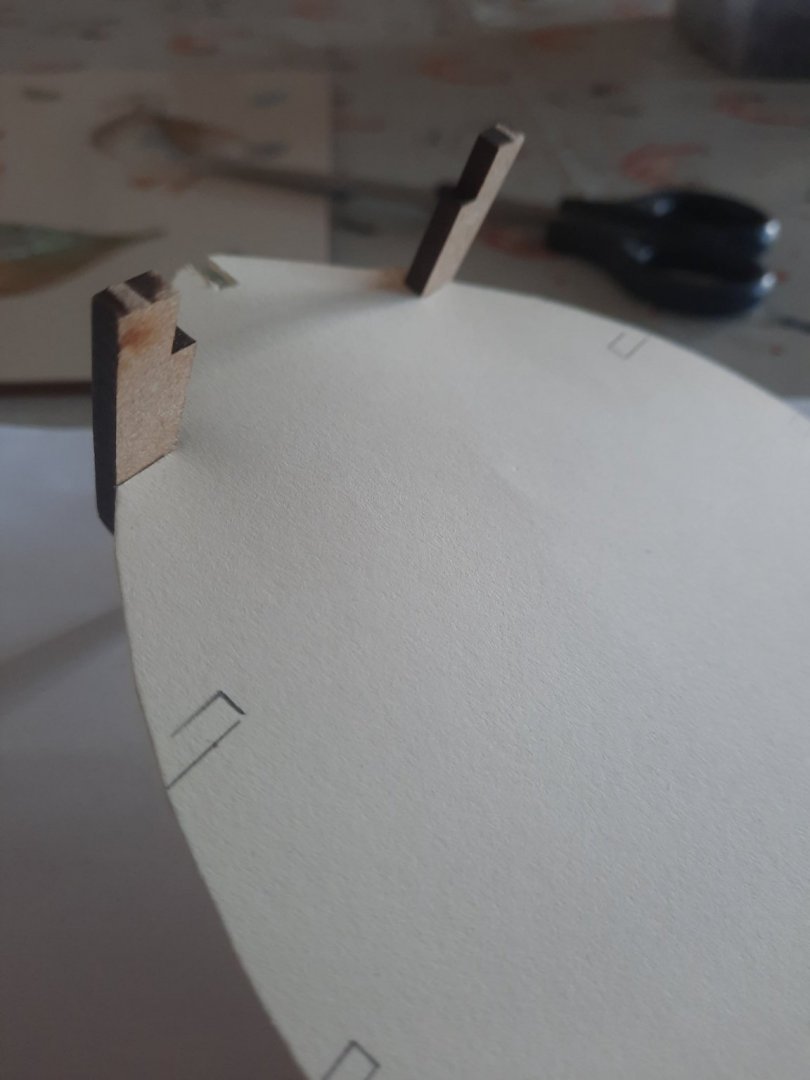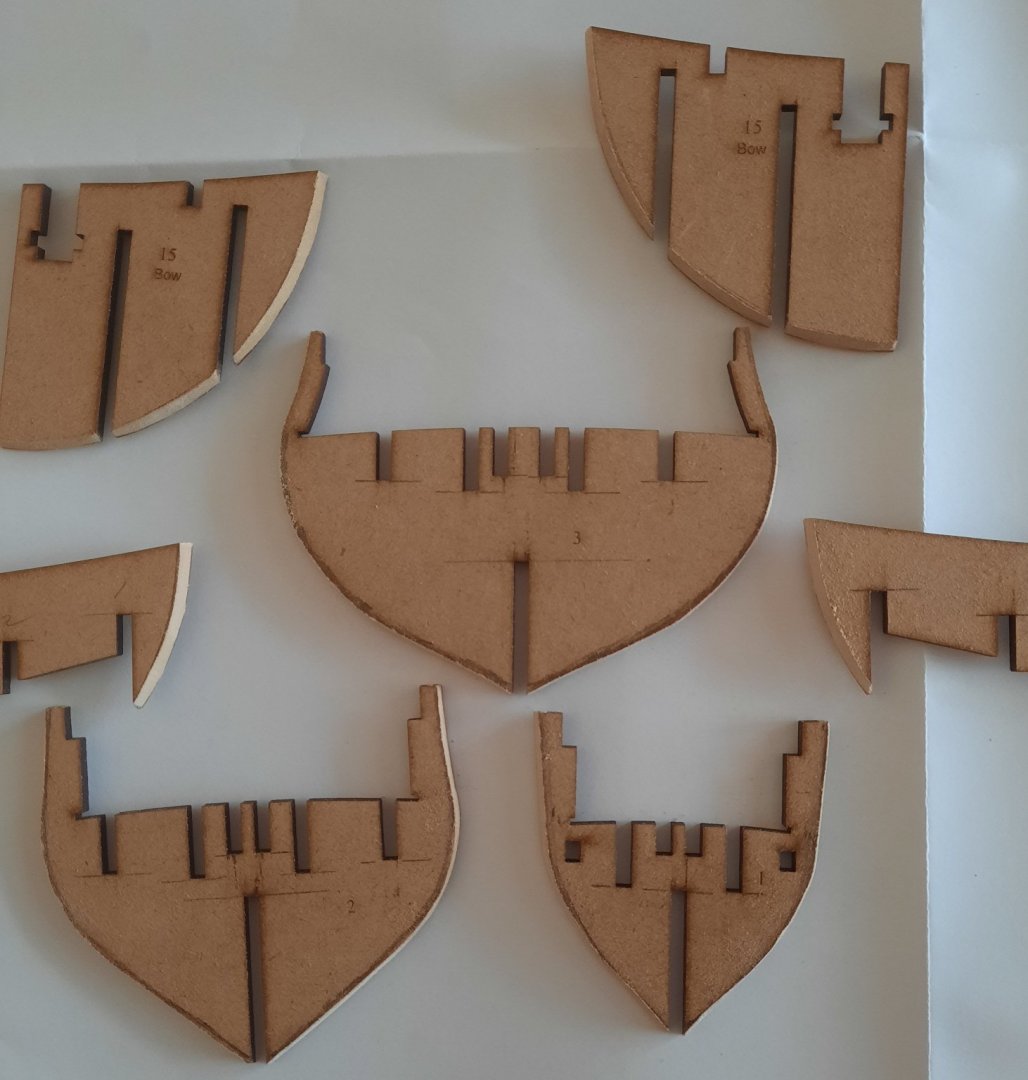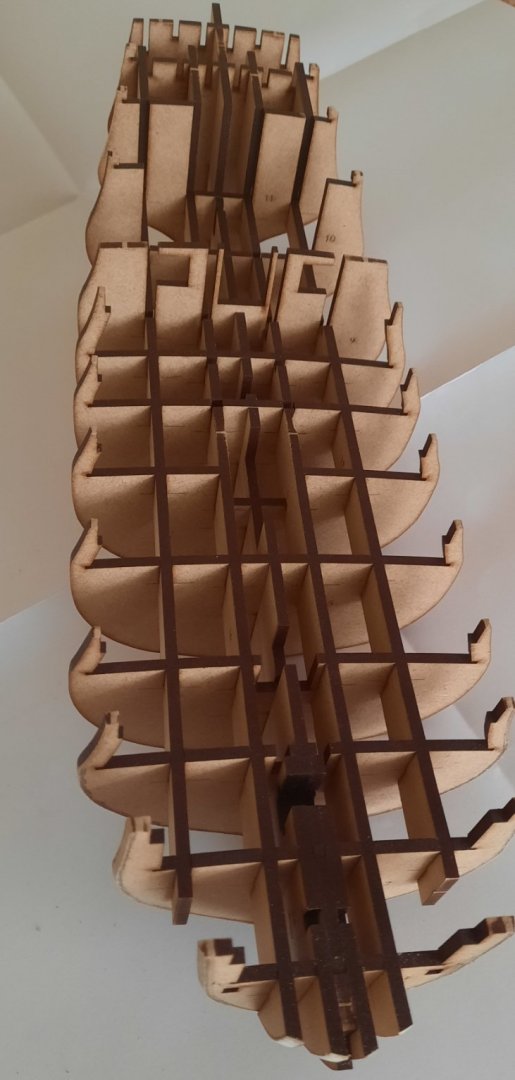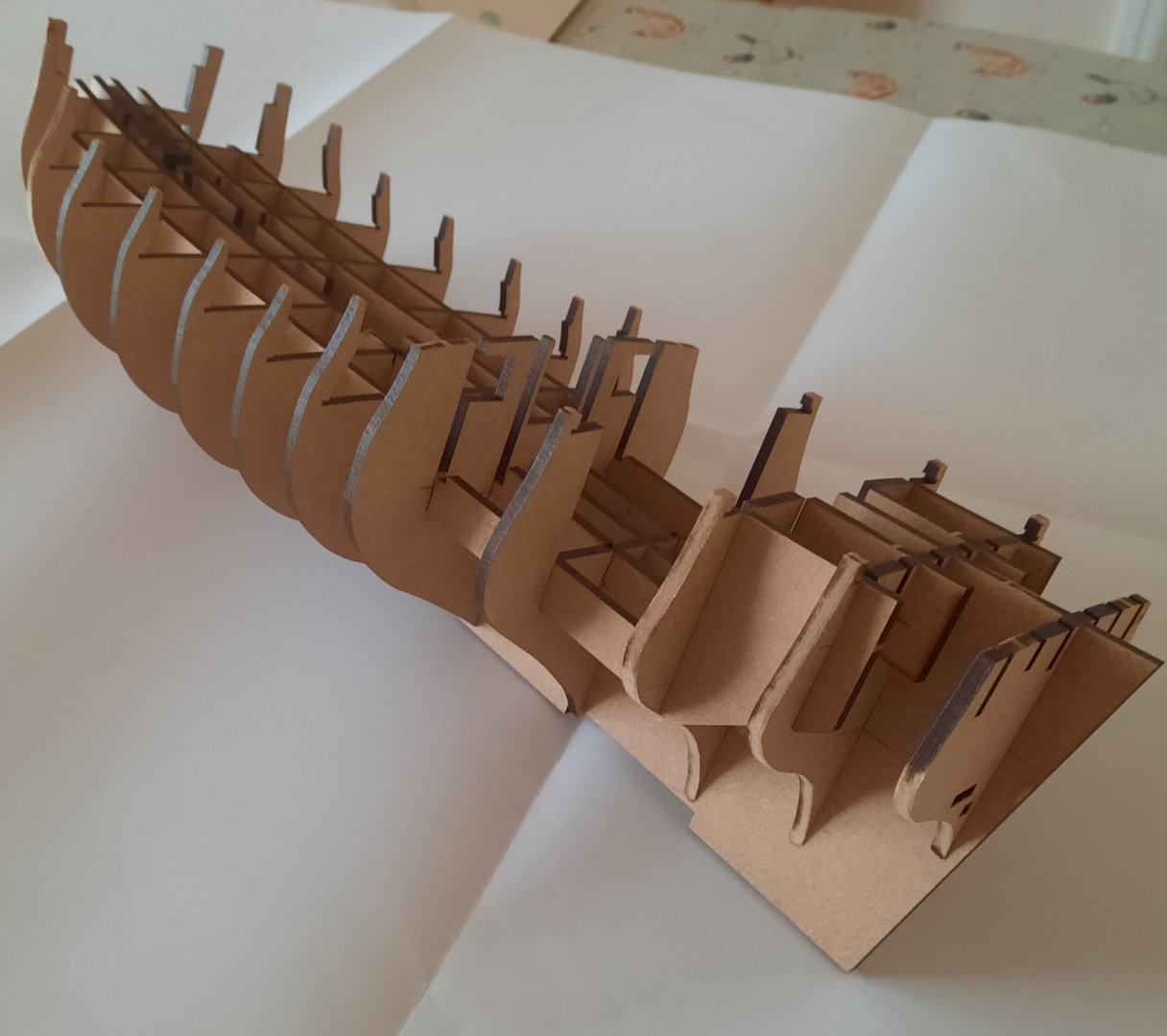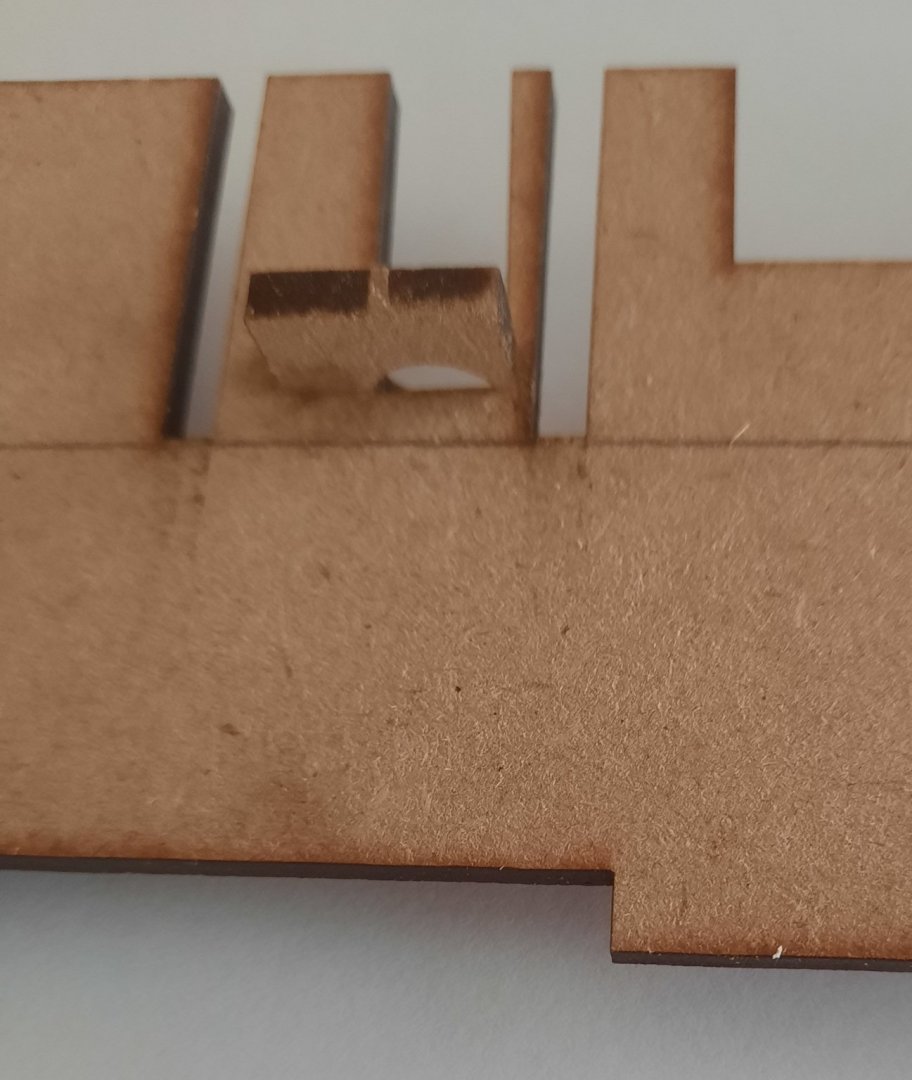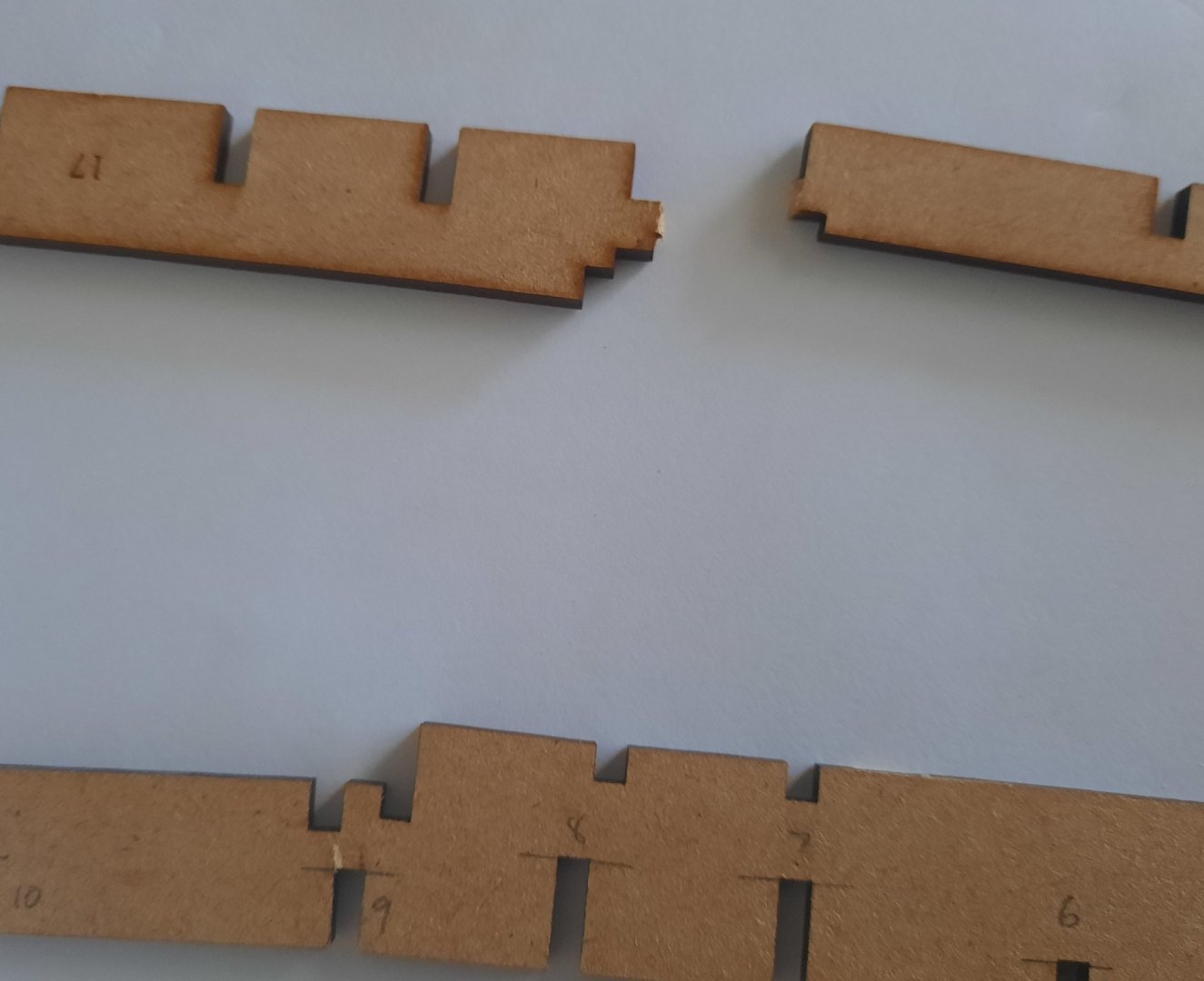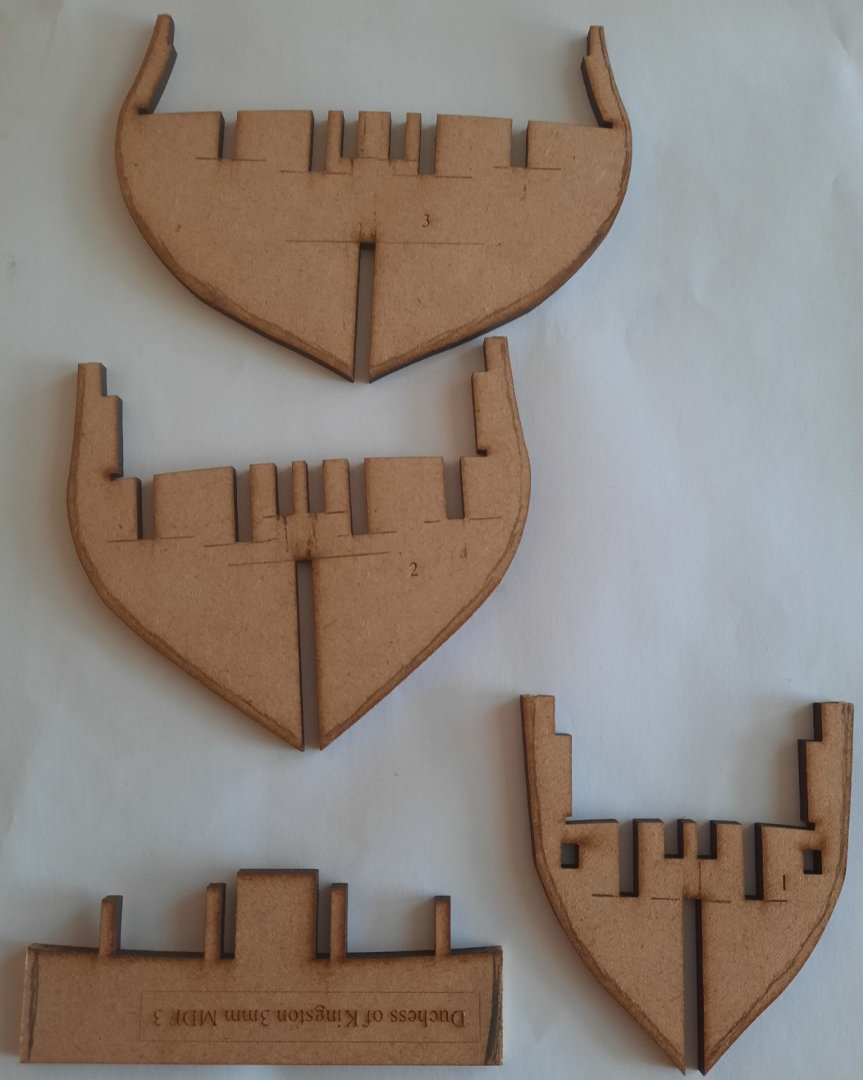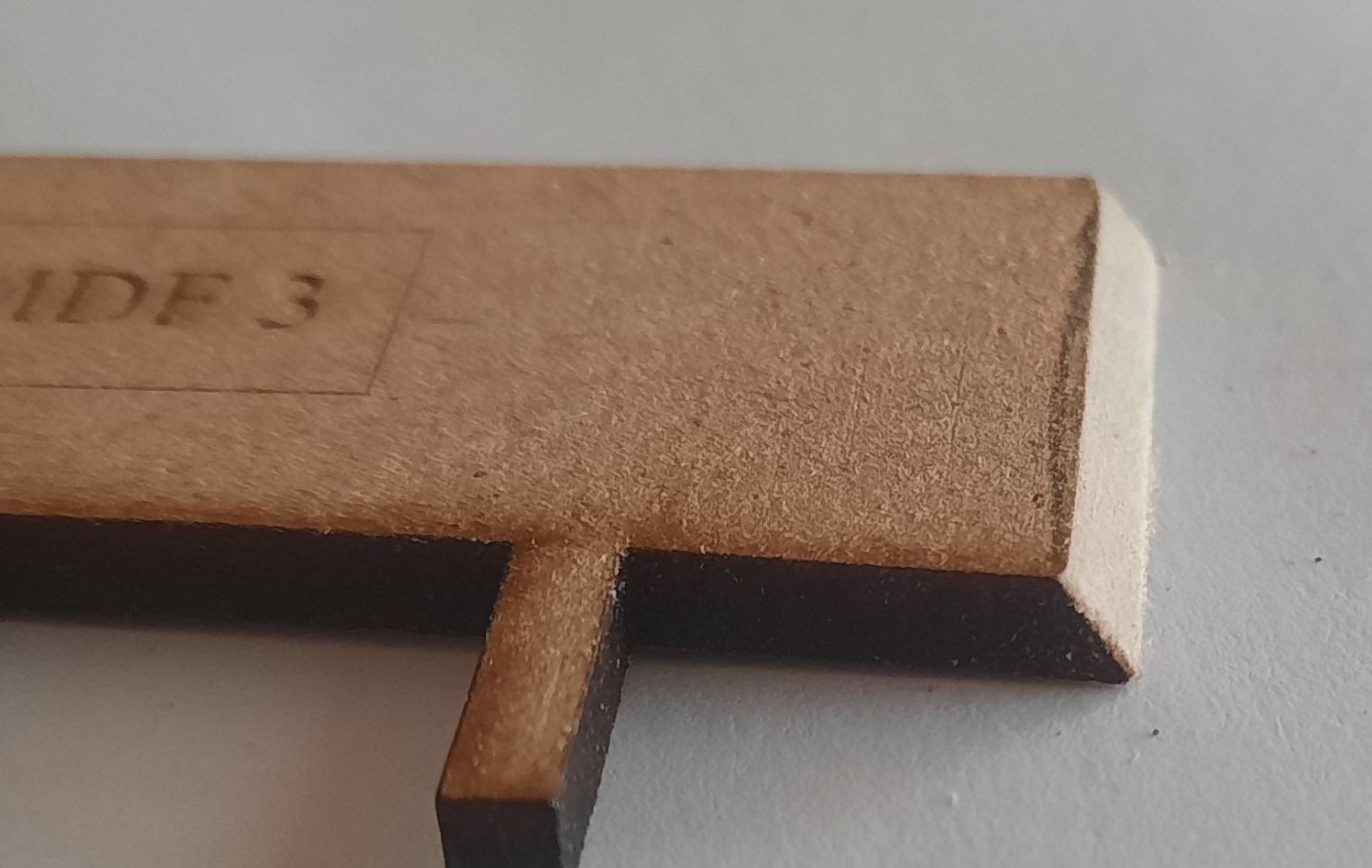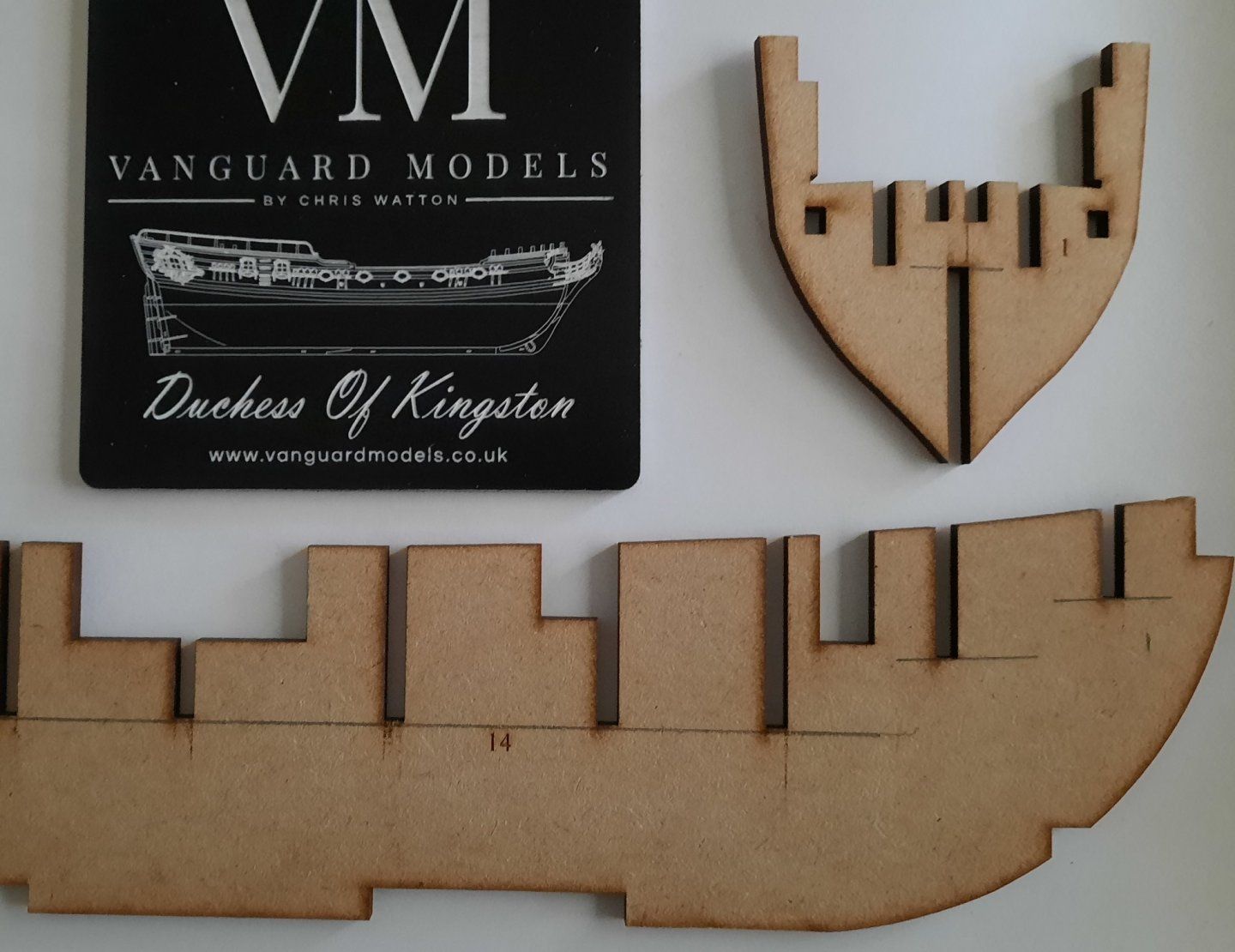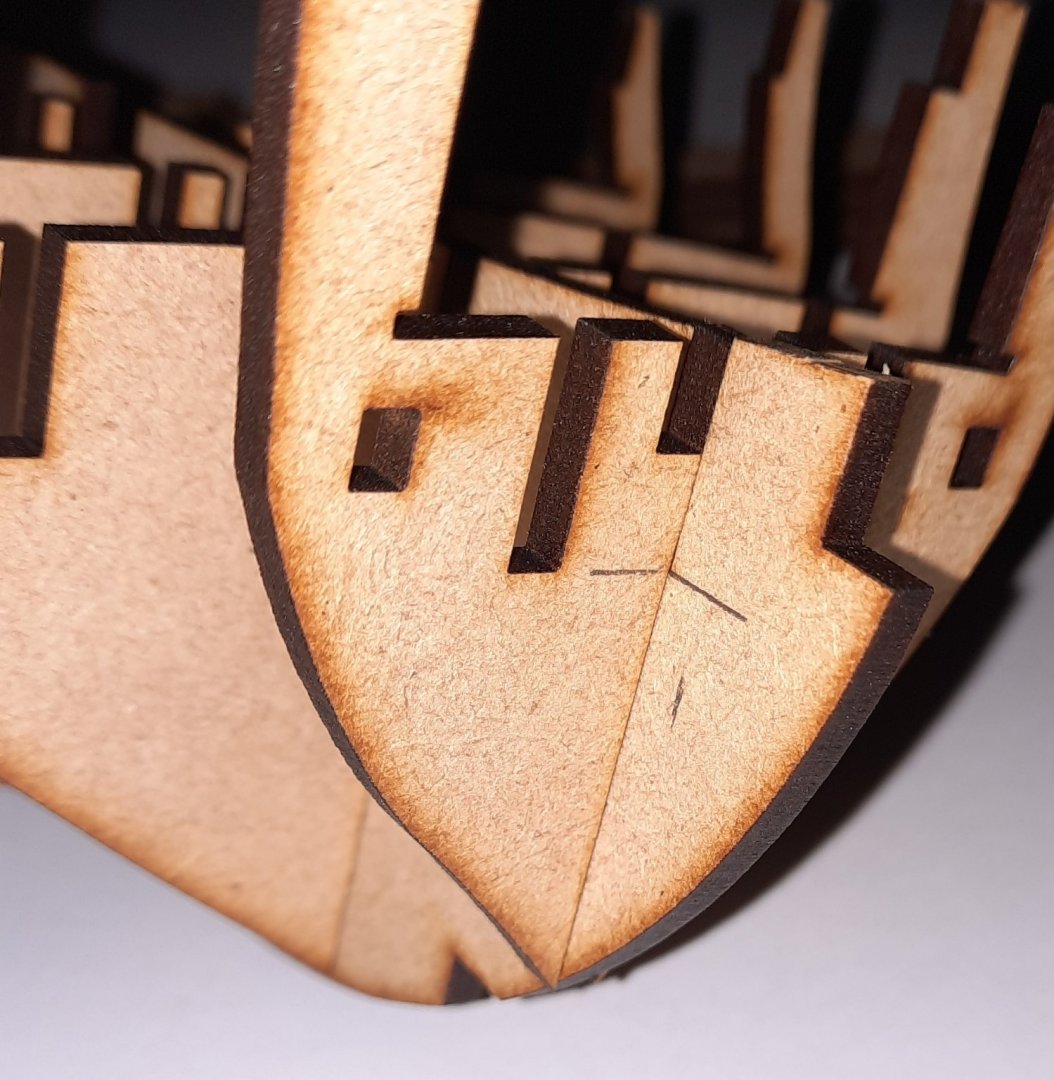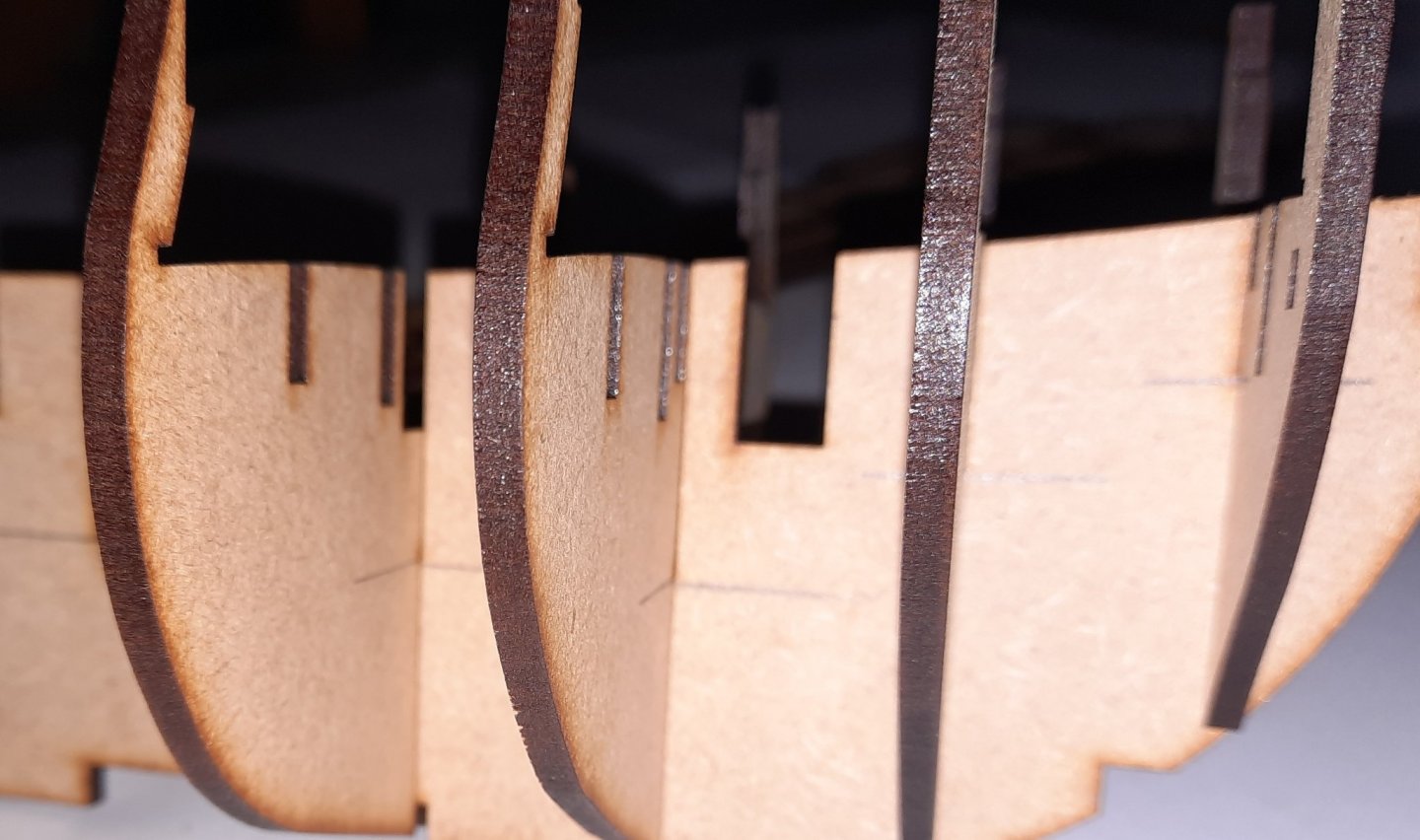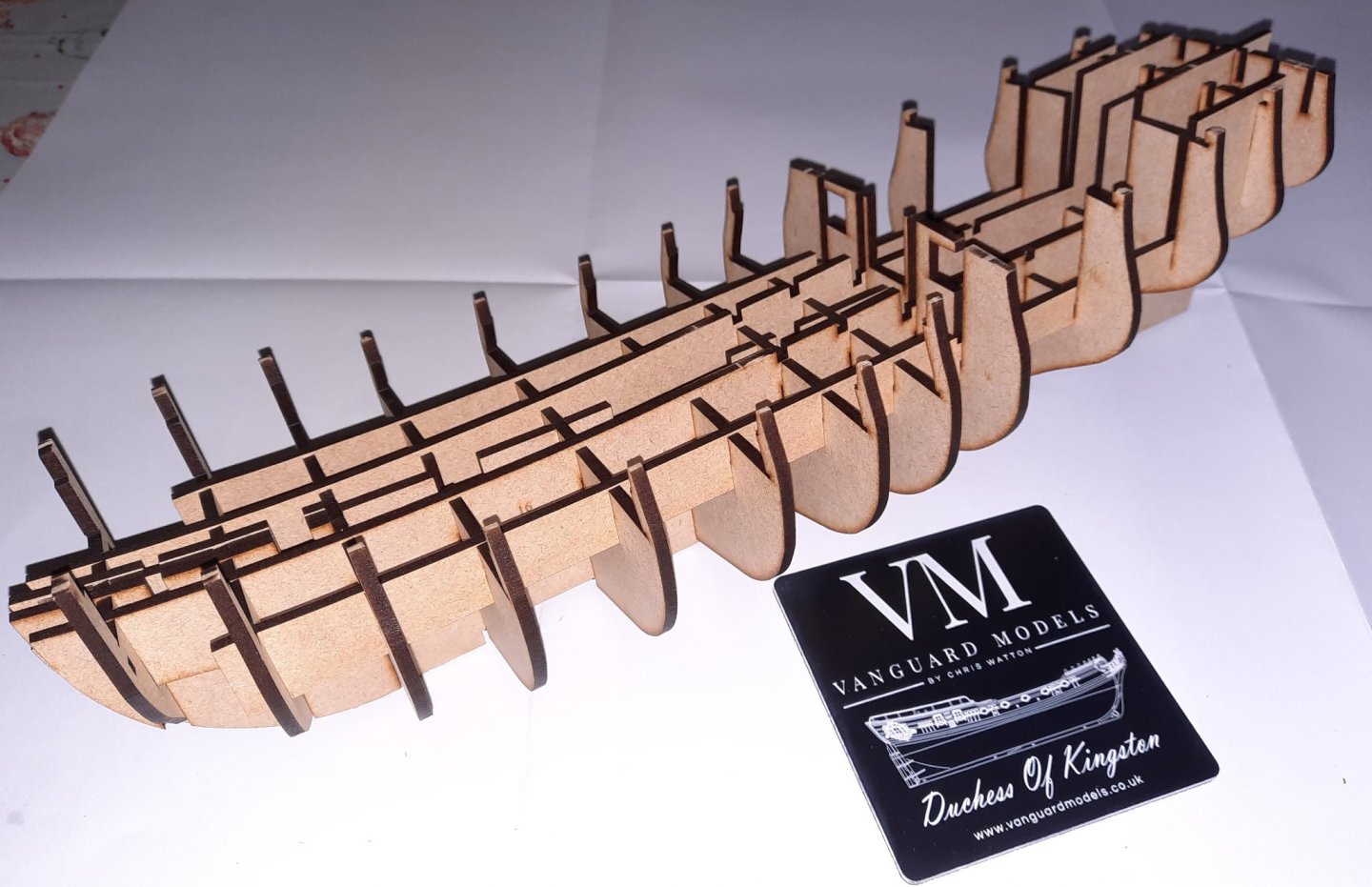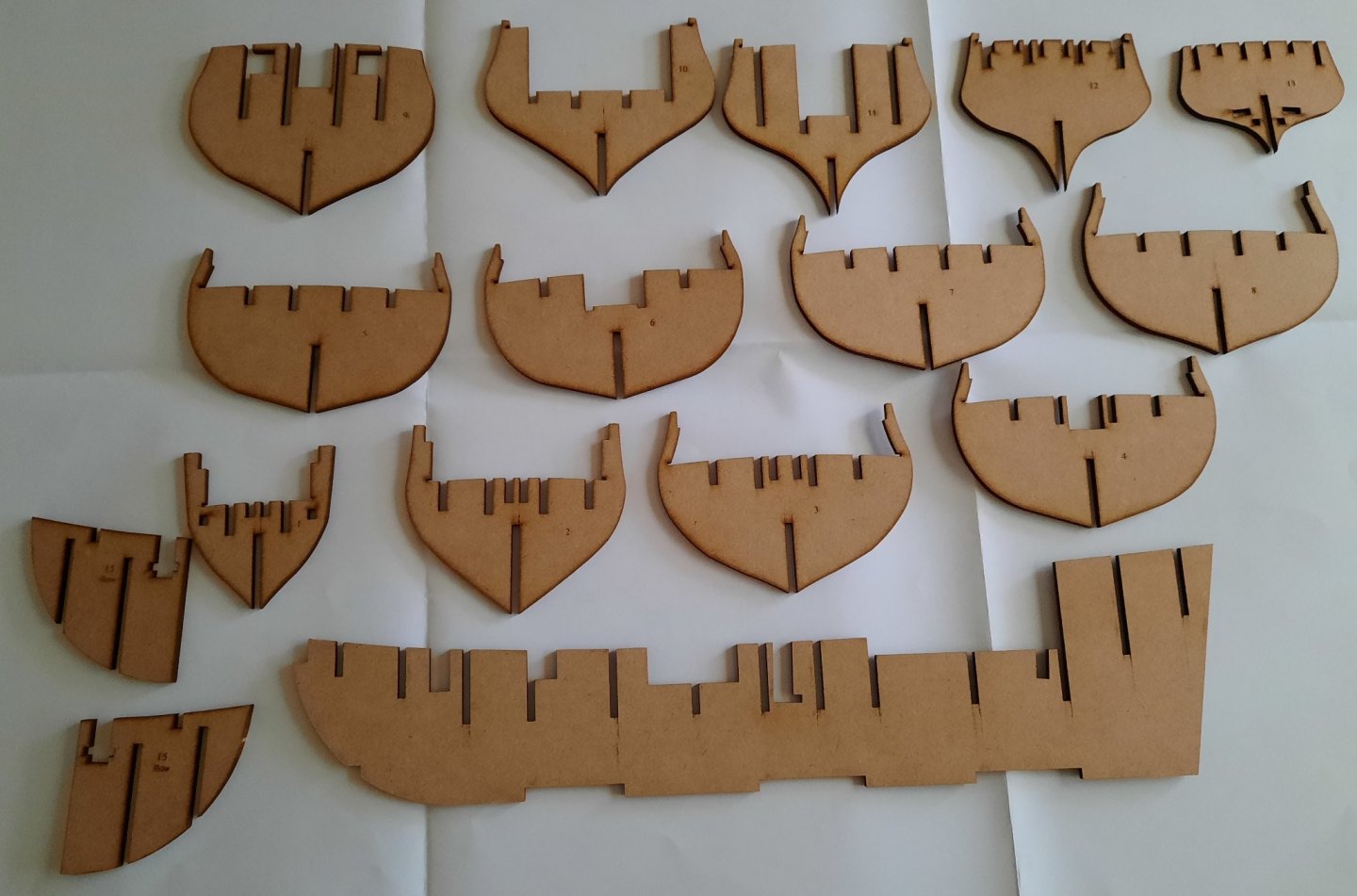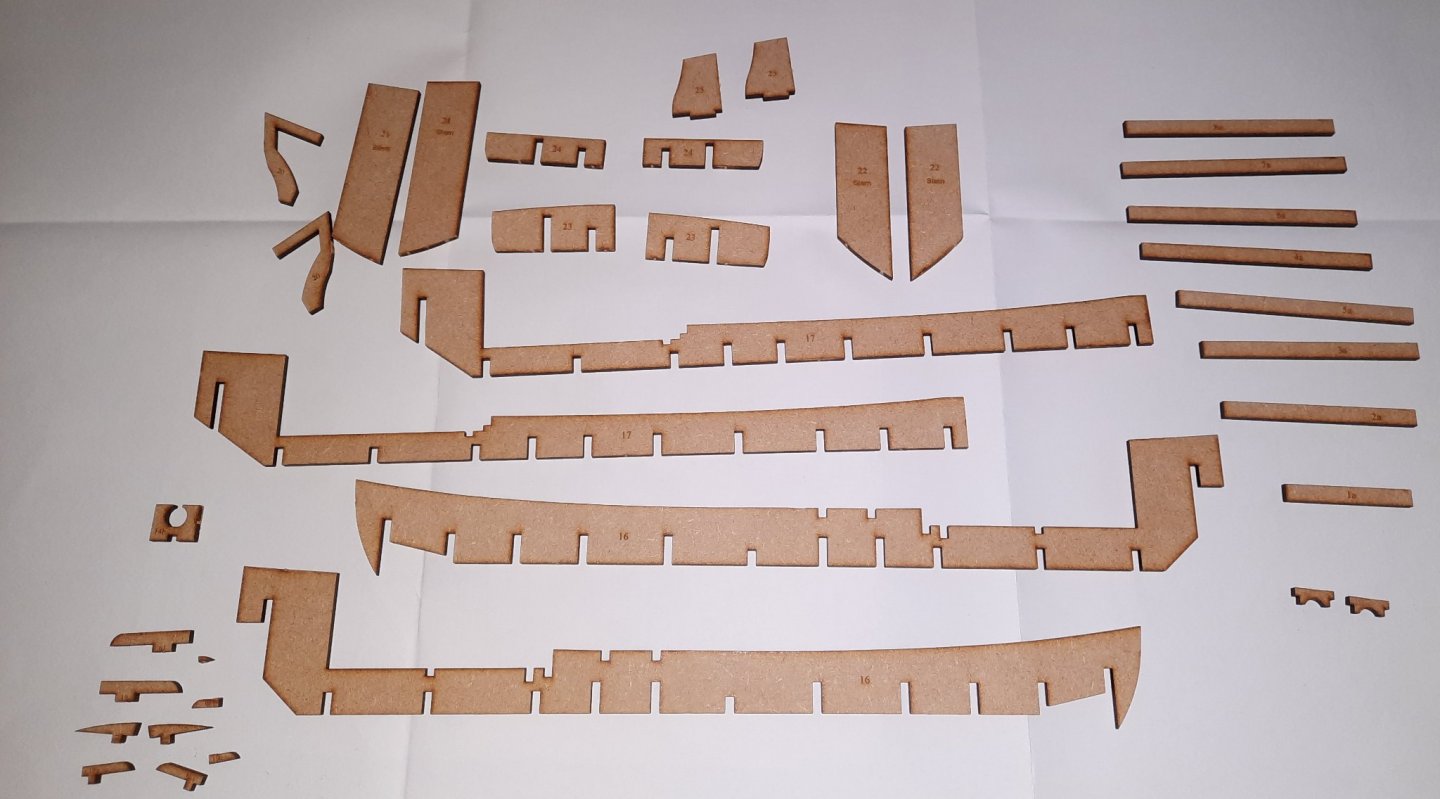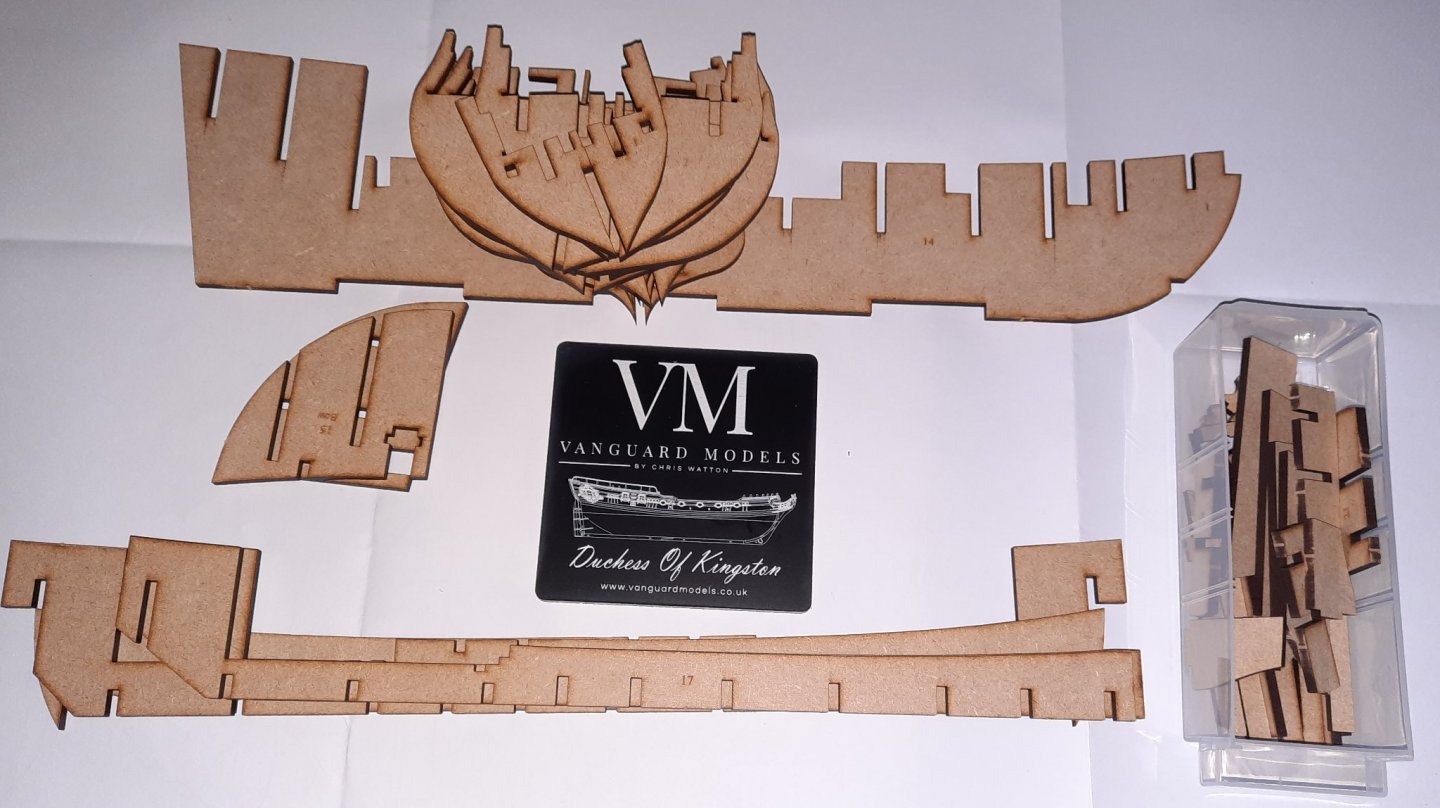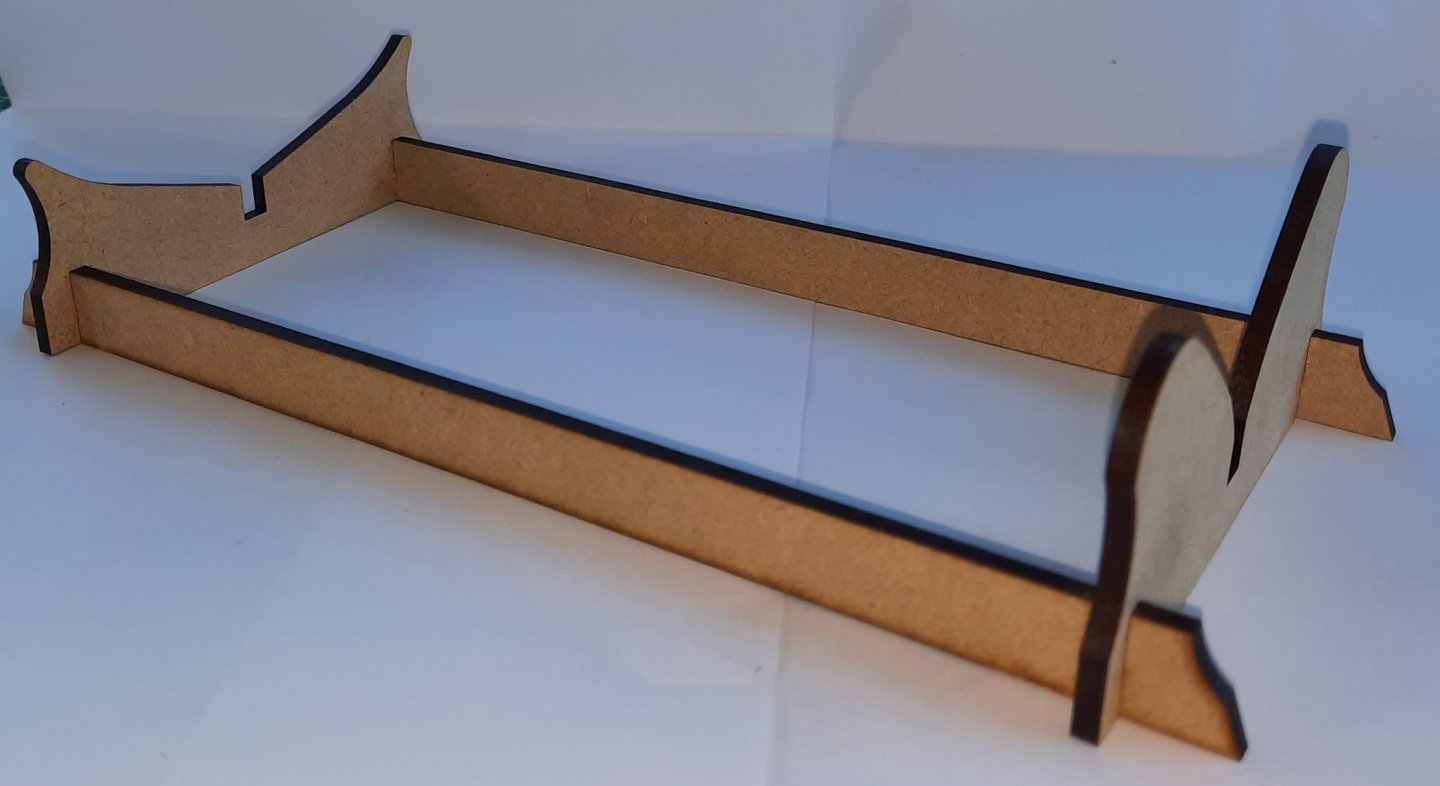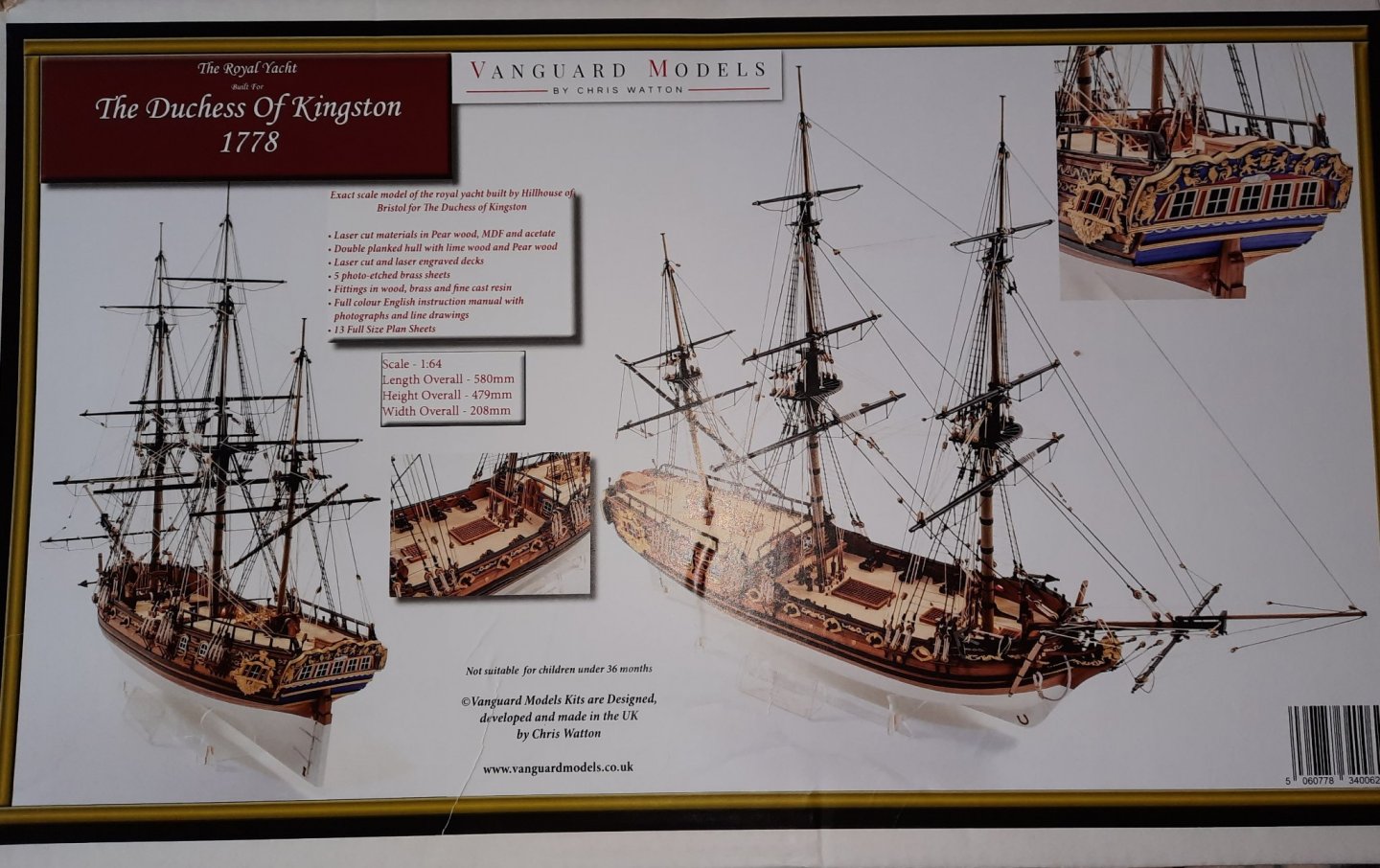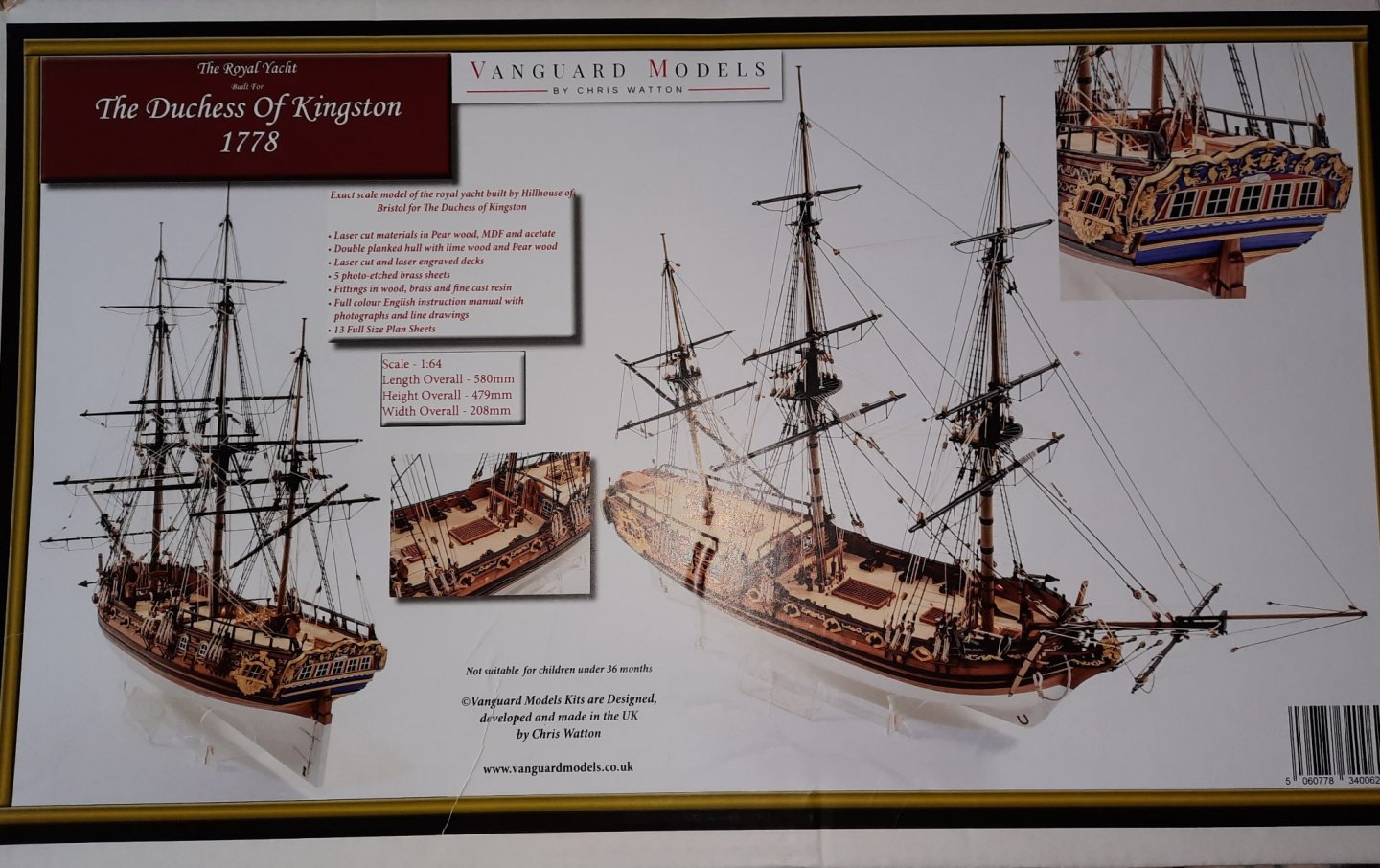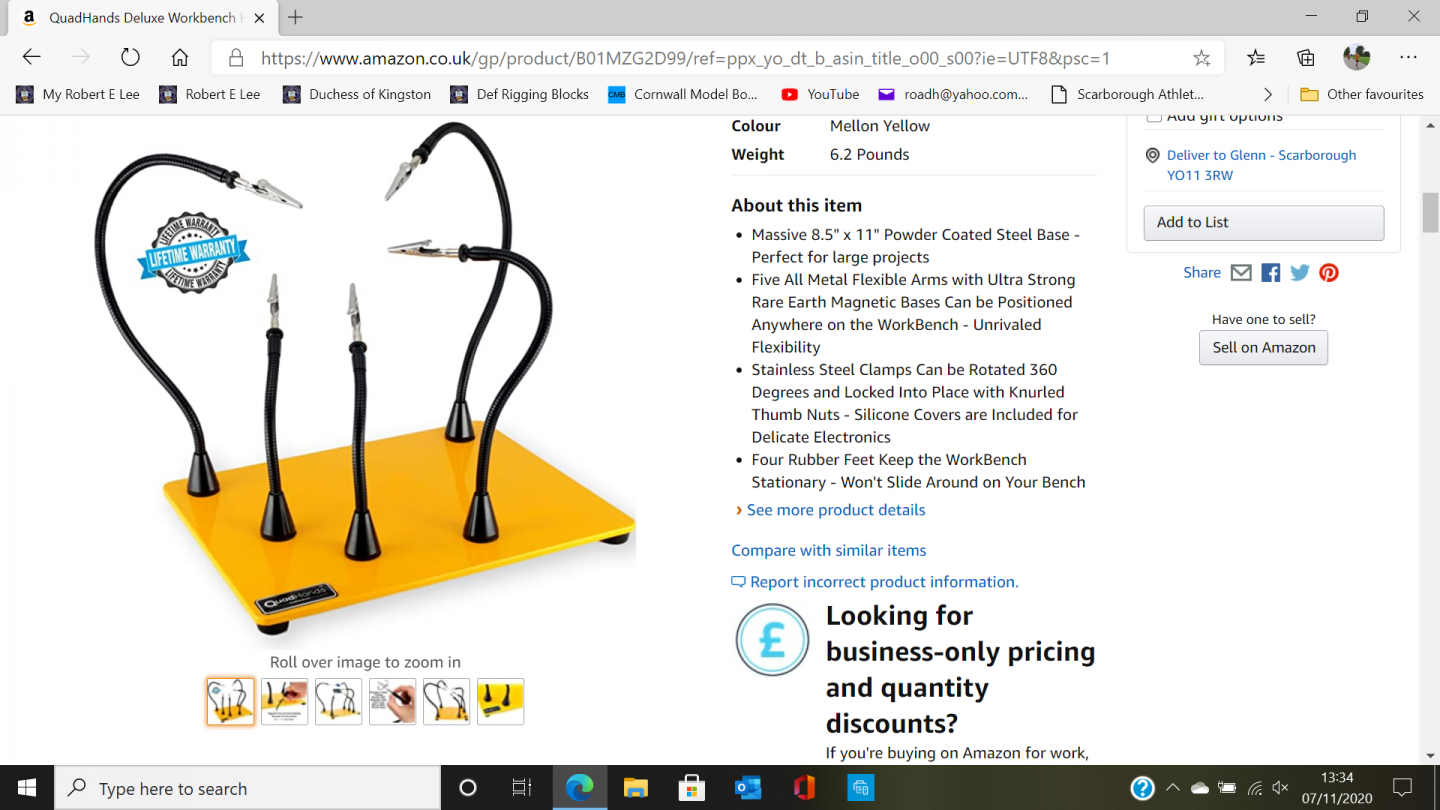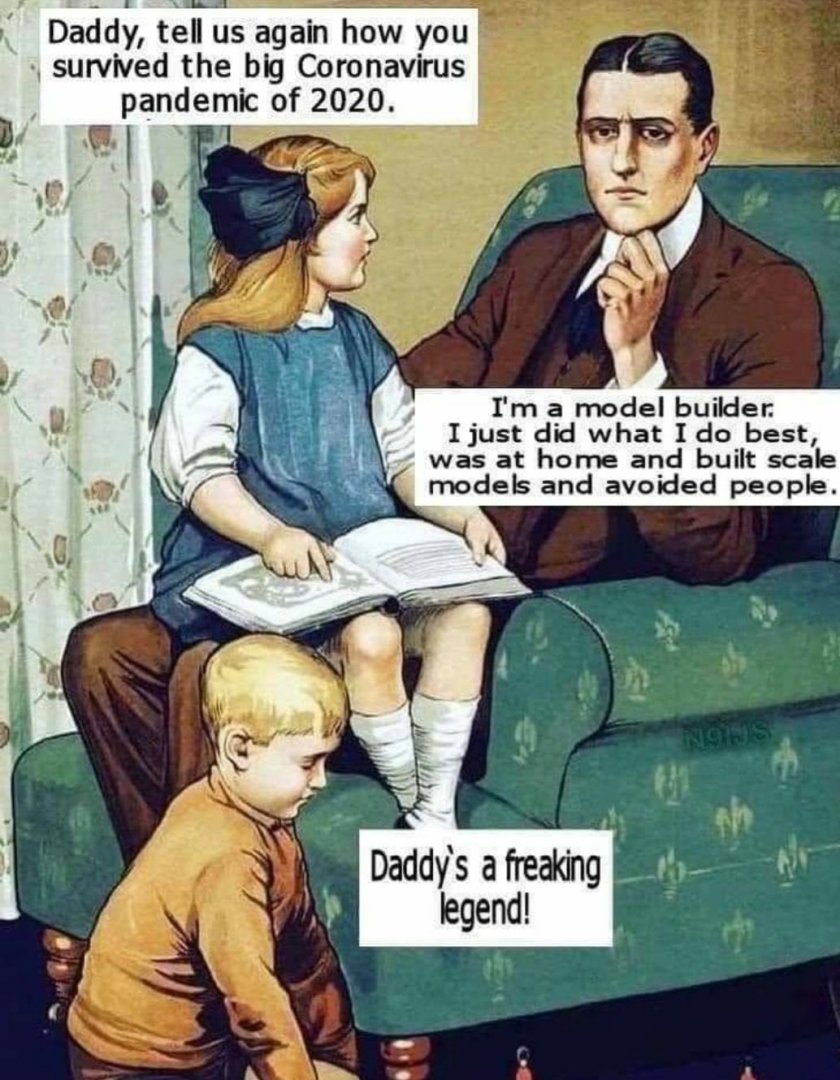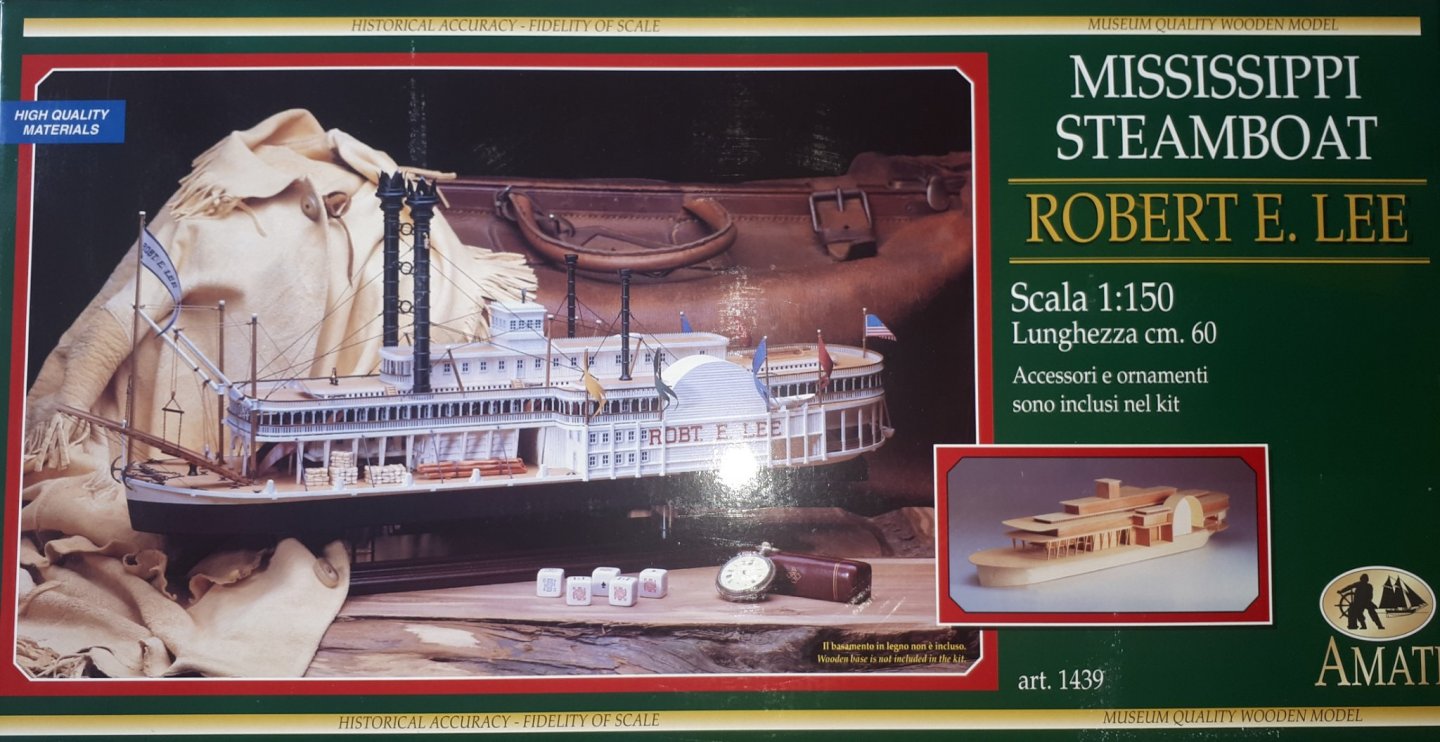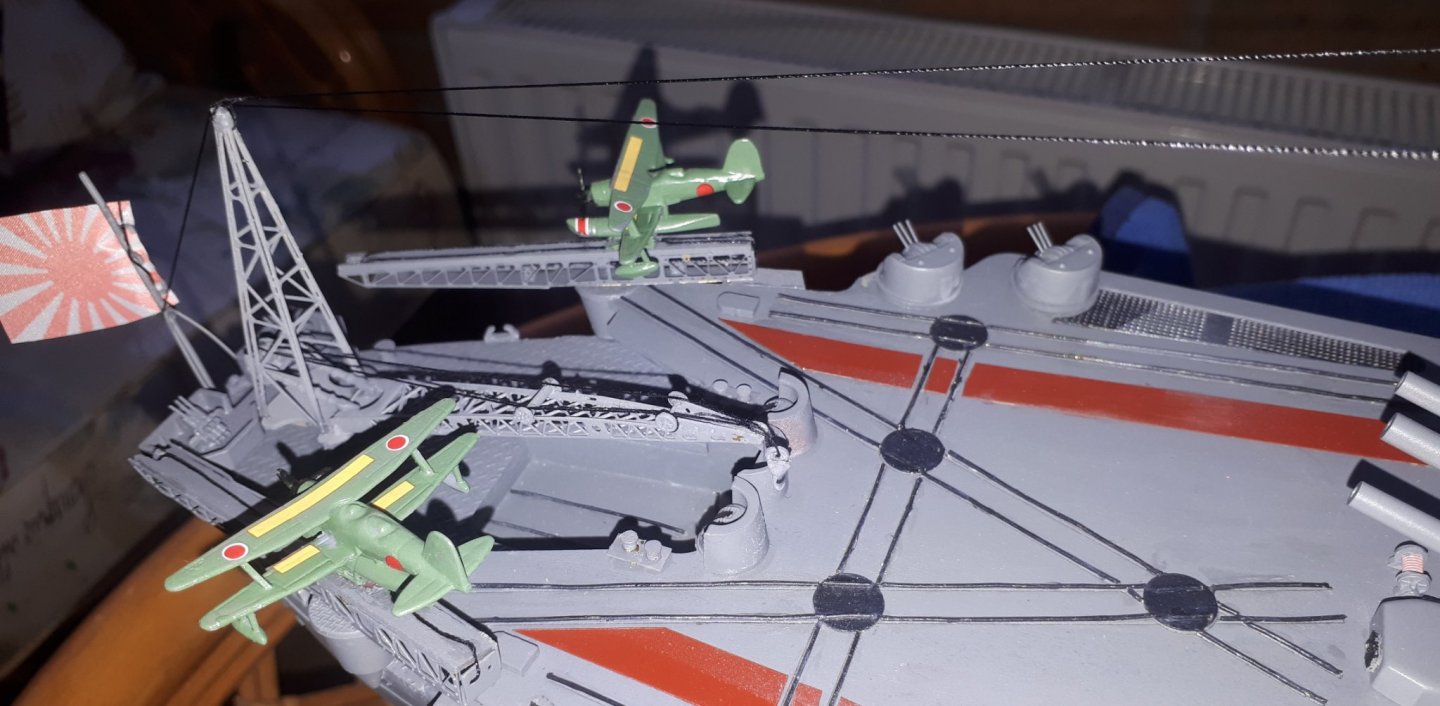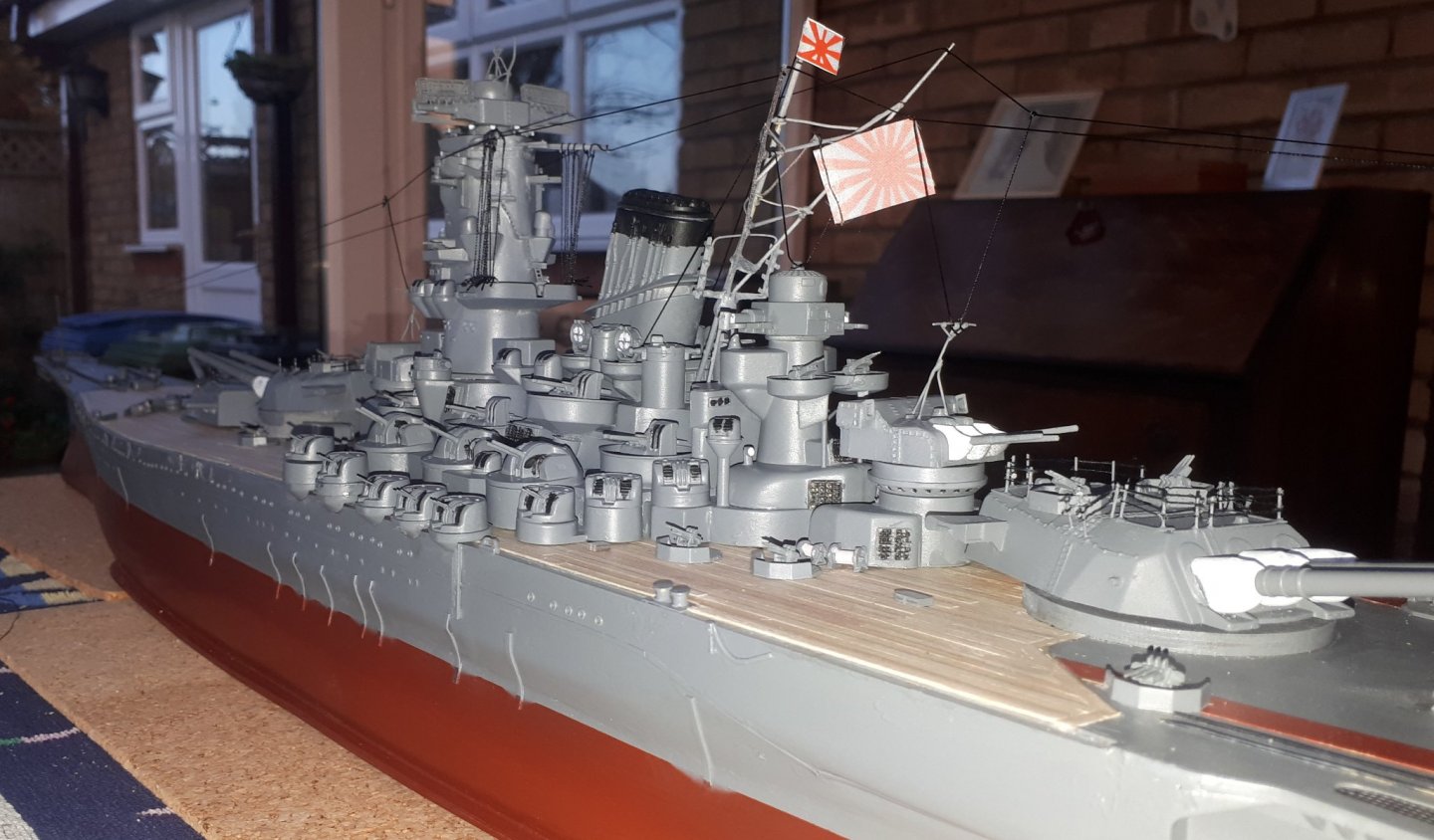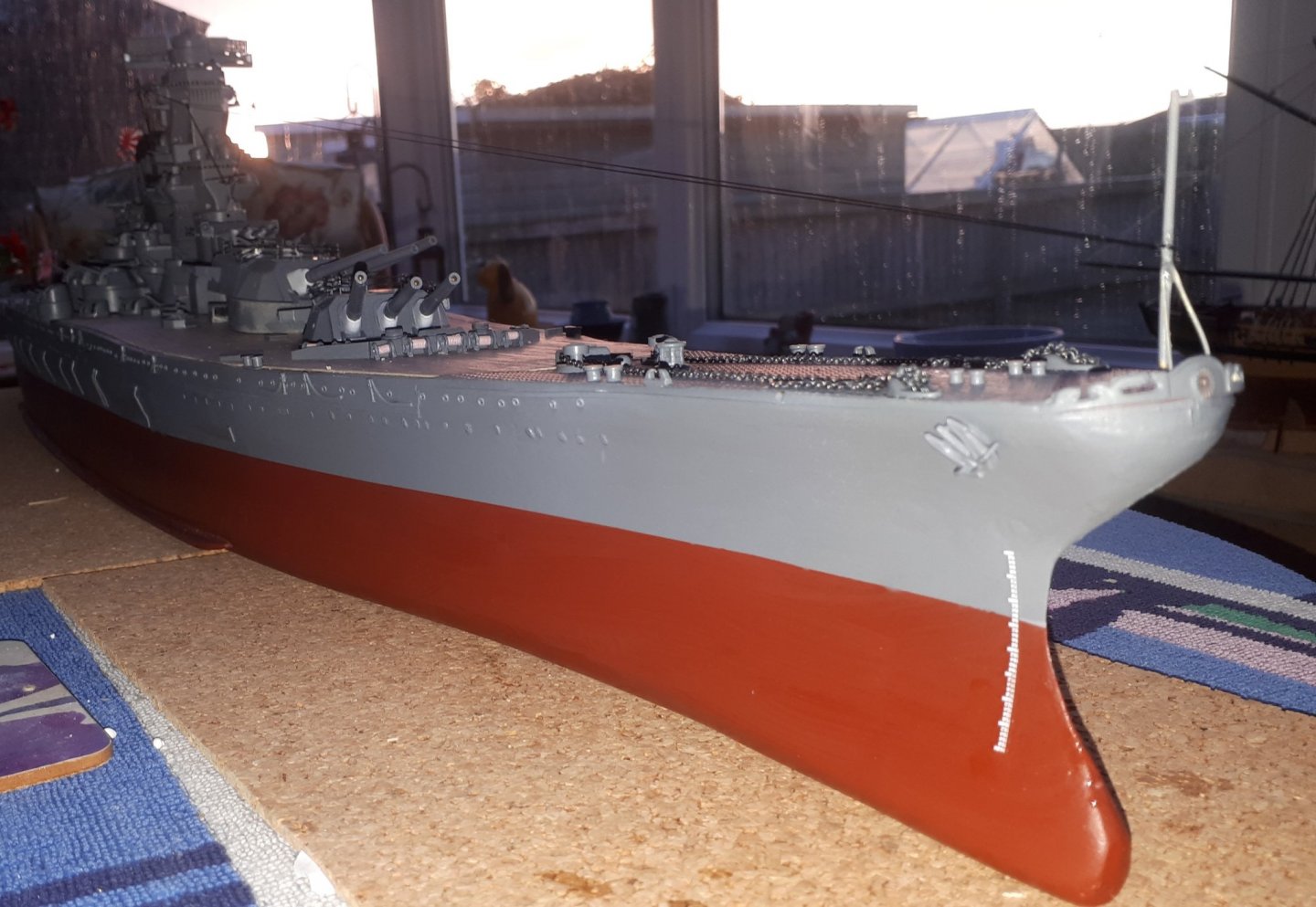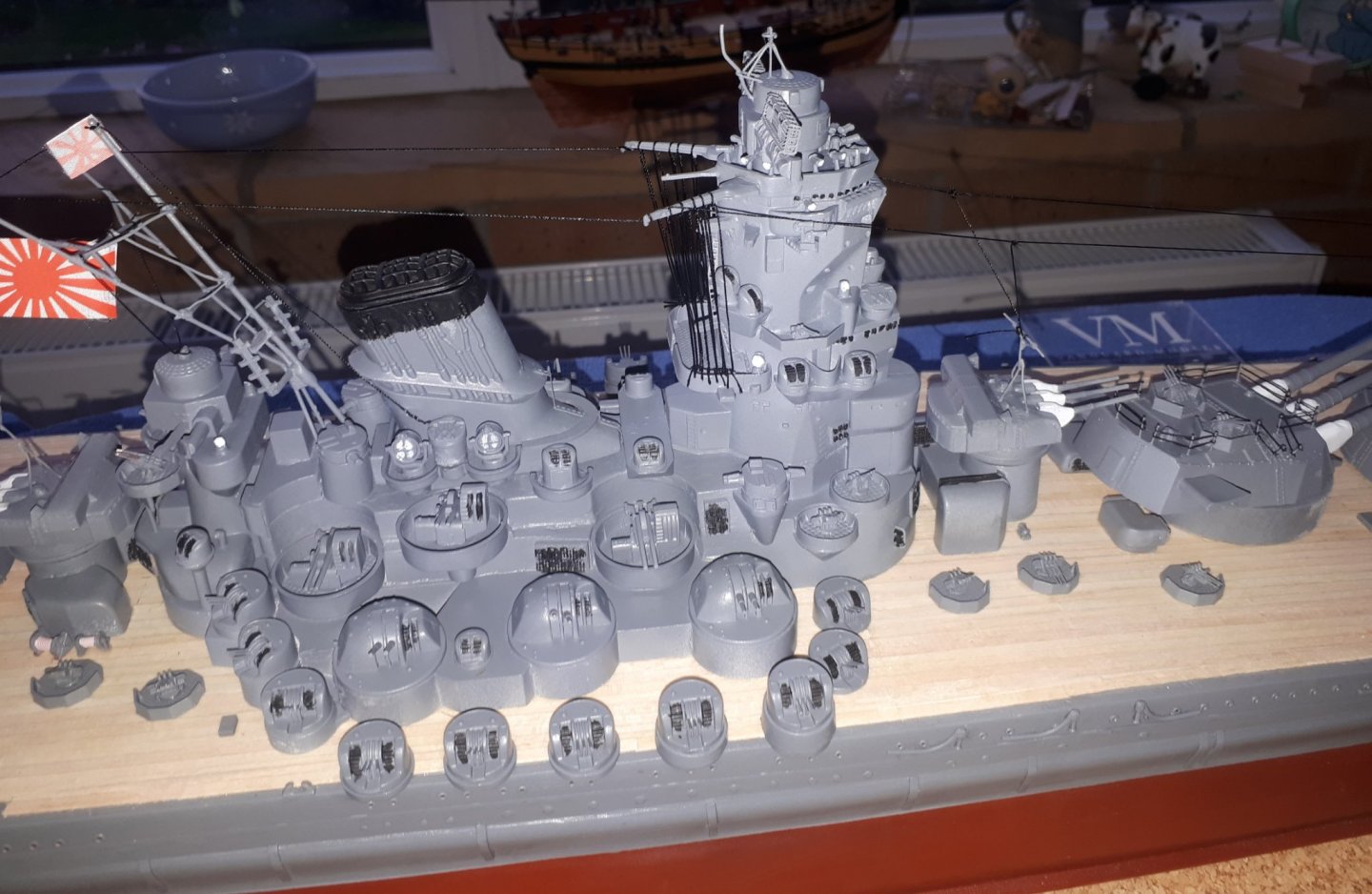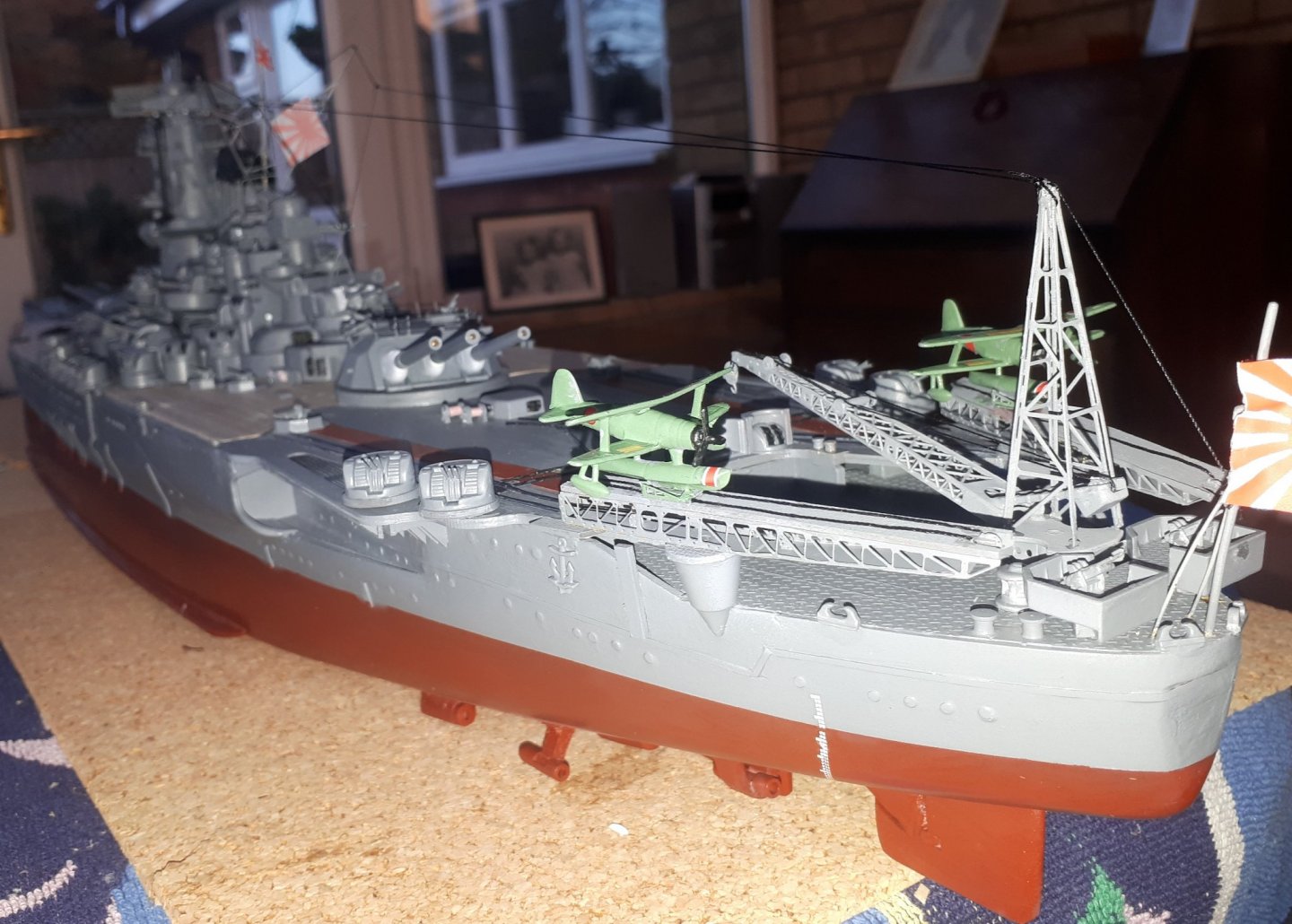-
Posts
3,156 -
Joined
-
Last visited
Content Type
Profiles
Forums
Gallery
Events
Everything posted by Glenn-UK
-
Stage: Hull Construction Build instructions: 10-28 inclusive Task: Fairing and fitting bulkheads to false keel Parts: 1 to 17 Time Spent: 60 mins + 60 mins preparation work Status: Complete Build Notes: Bulkheads 1-3 & 11-13 need to be partly faired before they are fitted to the false keel (14). The same is true with the 2 x bow support patterns (15) and the 2 x inner longitudinal strips (16). To help get a better idea of the amount of fairing required I made a template of the fore deck using some stiff card. I found this to be of great benefit. I have added a couple of photos to show this. I added a pencil line to the bulkheads to indicate the amount of pre fairing required, airing on the side of safety noting the final fairing would be completed once the decks have been fitted. I used my Dremel 3000, on its slowest speed with a 400+ grit sanding wheel, to apply the required fairing. I made sure I did not extend past by pencil lines. I also used one of my thin sanding sticks to finish off the pre-fairing. I have attached a picture of the completed pieces. I did find it necessary to slightly enlarge the slots in bulkhead 10 that are used to locate with the longitudinal strips 16 and 17 using one of my needle files as I found this bulkhead was very tight fitting compared with all the other bulkheads. Bulkheads (1-13) were added to the false keel without any problems. Next I added the two bow support patterns (15) and finally the 4 longitudinal strips (2 x 16 and 2 x 17) were added. I took my time fitting the inner longitudinal strips (16) ensuring all the bulkheads were lining up with the slots. Once all the longitudinal strips were fully inserted the hull became very secure. I was incredibly pleased with how the hull is now looking, which is a great testament to the attention to detail with Chris Watton’s design work. Pictures of completed stage have been added. Build Photo(s): Pre marking the bulkheads with template Pre faired bulkhead, support patterns and longitudinal strips Hull assembly with parts 1 -17 fitted
- 382 replies
-
- Vanguard Models
- Duchess of Kingston
-
(and 1 more)
Tagged with:
-
Stage: Hull Construction Build instructions: 6-9 Task: Fitting Main Support Pattern to False Keel Parts: 14 & 14a Time Spent: 5 mins Status: Complete Build Notes: This was a straightforward task. It is important to make sure that part 14a is fully locked into place. Once in place I brushed some diluted wood glue around the joins. Build Photo(s):
- 382 replies
-
- Vanguard Models
- Duchess of Kingston
-
(and 1 more)
Tagged with:
-
I have not made any progress today, but I have done some preparation work as detailed below, approx. 2 hours in total today Unfortunately, as can be seen in the photo below I have managed to damage (my own stupid fault) 2 of 4 the longitudinal strips (1 x 16 and 1 x 17). The damage to 16 happened when holding the longitudinal strip in one hand with one bulkhead being test fitted, the weight of the unsupported bulkhead caused the damage. The damage to 17 happened when I was trying to "gently" release the parts from my initial dry fit assembly. These parts can still be fitted without affecting the integrity of the model (as two parts rather than 1). It should be noted that both strips were damaged at the same point which is where bulkhead 9 slots in so please take care if you are building this model. I believe I have sorted out the slight issue I had yesterday with fitting the longitudinal strips. When checking each bulkhead in isolation I discovered that bulkhead 10 had a little bit of burring around the slot which was preventing the two parts engaging. I gave bulkhead 10 a very light sand with a 1000 grit which removed the burring and on a retest bulkhead 10 did seat fully in the slot on strip 16, albeit it was still a tad tight compared with the other bulkheads. As part of the preparation I have now marked bulkheads 1-3 ready for the initial fairing as shown in the picture below. I also made a cardboard replicate of the fore deck part and used that to get an rough idea of how much fairing would be required. Hopefully I aired on the side of caution when marking the bulkheads. I also marked an offcut piece of the 3mm MDF which will be my test piece. I have a large selection of dremel sanding discs, as can be seen in the attached picture and I rummaged through them looking for a 400+ grit attachment. With my dremel set to the slowest speed setting I was able to fair the test piece without any problems. The process did not take too long yielded a very nice even result. As can be seen in the following picture it produced a very good result and appears to be a very good match for the picture(s) provided in the build manual. Rather than rush this task I plan have another couple goes at fairing test pieces before I actually start on the actual bulkheads.
- 382 replies
-
- Vanguard Models
- Duchess of Kingston
-
(and 1 more)
Tagged with:
-
Thanks Chris. Based on my experience with your other designs I'm 100% certain there is not an issue. I just to take a bit of time to make sure everything is fully aligned which will be tomorrow's first order of business. Bulkheads 1-13 & 15 fitted very nicely and I did like the click when fully seated.
- 382 replies
-
- Vanguard Models
- Duchess of Kingston
-
(and 1 more)
Tagged with:
-
Thanks James. I was teasing part 16 (port and starboard) and they seemed to be aligned across all the bulkheads but they did not seem to locate fully when I started to apply some pressure on bulkheads 11 and 12. I had to take a break for some household chores. I sure when I have a bit more time they will locate fully.
- 382 replies
-
- Vanguard Models
- Duchess of Kingston
-
(and 1 more)
Tagged with:
-
Stage: Hull Construction Build instructions: 18-28 Task: Dry Fitting Parts: 1-17 Time Spent: 20 mins Status: Complete, but I will revisit this task again once I have checked fitting of part 16 with bulkheads 11 and 12 in isolation. Build Notes: I have dry fitted the bulkheads (1-13 & 15-17) to the false keel (14). I noted some bulkheads were a tight fit therefore I decided to add some marks to double check the bulkheads were correctly seated. I made a pencil mark on the bottom of the slots, both on the bulkheads and on the keel. When correctly fitted the two pencil marks should be aligned, the bulkheads 1-13 all seemed to make a satisfying click noise when fully seated. I was not able to fully insert the two Longitudinal Patterns (16) as they seemed to be a slight issue with fitting them to the slots on bulkheads (11 and 12). I did not want to apply any undue pressure at this stage therefore when I disassemble the dry fitted bulkheads from the false keel. I will need do some further checks of the slot fitting of the Longitudinal Patterns (16) with the bulkheads 11 and 12 in isolation. The dry fitted hull assembly seems to be very sturdy. The next task will be to mark the bulkheads with a preliminary fairing line as per build instruction 11. Build Photo(s): Marking the bulkheads Bulkhead 1 correctly positioned Bulkhead 1 - 4 correctly positioned Dry fit of parts 1 to 17 inclusive
- 382 replies
-
- Vanguard Models
- Duchess of Kingston
-
(and 1 more)
Tagged with:
-
Stage: Hull Construction Build instructions: 1-2 Task: Removal of Keel parts from MDF sheets and cleaning tabs Parts: 1-25, 1a-15a, 19a-c Time Spent: 80 mins Status: Complete Build Notes: This is not very exciting post but I have included this task in my build log to reflect an accurate record of the work undertaken Using my trusty craft knife (fitted with a new blade) each piece was released from the MDF sheet(s) in turn. I then used my thin medium grit sanding stick to clean the tabs. There were quite a few different parts and it took longer than I expected to complete this process. I think it was better to take my time, especially with the cleaning of the tabs. All the pieces have been engraved with the part number which I think is a major plus point. A couple of the smaller pieces did delaminate (1 x 19b and 1 x 19c) as there were removed from the MDF sheet. I simply applied some wood glue to the delaminated areas and clamped. I plan to dry fit the hull construction parts before starting to fair / glue any of the hull construction pieces together so that I can get an appreciation of the bulkhead fairing angles and mark the required bulkheads accordingly. Also the build instructions 10,11,12…. etc. recommends the bulkheads are marked and faired prior to being assembled. Build Photo(s): Hull parts 1 – 15 Hull parts 16 – 25 plus the subset parts (a, b and c) Hull parts ready to be dry fitted, some parts to be kept safe in storage draw
- 382 replies
-
- Vanguard Models
- Duchess of Kingston
-
(and 1 more)
Tagged with:
-
With regards to how I plan to structure this build log I have taken note of a comment made in the build manual which states " Treat each stage as a separate project" With that in mind I will attempt to record each stage separately. In some cases a build stage will be a simple single post, but in some cases it may be necessary to record a completed stage as a series of posts. Therefore each post will start with a Stage Header and Status. I will also try to keep a record of the time spend on building the model. in this respect I will not record any time I have spent reading / studying plan drawings. Stage: Hull Construction Build instructions: 1-5 inclusive Task: Build of temporary cradle Parts: 26, 27 & 28 (x2) Time Spent: 8 mins Status: Complete Build Notes: It did not take too long to remove the 4 parts required for the temporary cradle. I used one of my thin medium sanding sticks to clean up the tab marks. The parts fitted together very well noting the slotted parts were a very tight fit which meant the frame was very solid and did not require any wood glue. I might brush in some diluted wood glue at some point for belt and braces. Build Photo(s):
- 382 replies
-
- Vanguard Models
- Duchess of Kingston
-
(and 1 more)
Tagged with:
-
I will follow this very sound advice. Many thanks for the heads up. I think it will a week or two at least before I've reached that stage.
- 382 replies
-
- Vanguard Models
- Duchess of Kingston
-
(and 1 more)
Tagged with:
-
The DOK has safely arrive at my dry dock. My time will now be split between my current Robert E Lee build and the new Duchess of Kingston build. Great delivery service by UPS and special thank-you to Mrs Watton for taking time off work to put the kits together, her dedication to the cause is greatly appreciated.
-
At 10:37am this morning the door bell rang. Upon opening the front door there was a strange looking package, addressed to me, on the door step. Imagine my surprise and delight, after opening the package to discover the following: What a great delivery service and I will start work on the build very soon. My wife's only concern is that I will stop work on my Robert E Lee build. I put her mind at rest with my plan to spend the mornings working of the DOK build and the afternoon's working on the Robert E Lee build. Lets see how long that plan lasts!!!!!
- 382 replies
-
- Vanguard Models
- Duchess of Kingston
-
(and 1 more)
Tagged with:
-
I have received notification that UPS have now collected my DOK kit from Vanguard Models today. I'm now eagerly awaiting an updated notification from UPS regarding the delivery. I have bought some new tools in help me with this build. I plan to keep a build diary to keep track of my time spent with this build and to record any observations / notes / problems.
-
Planning ahead for this build, especially the rigging phase I have ordered a set of Quad Hands. Thanks to Derek (Delf) for the tip on this great looking tool. The DOK kit is due to arrive on Tuesday, fingers crossed. I am planning to spend the mornings working on DOK and the afternoons working on my current Robert E Lee build.
- 382 replies
-
- Vanguard Models
- Duchess of Kingston
-
(and 1 more)
Tagged with:
-
And I'm now eagerly waiting for my delivery
- 117 replies
-
- vanguard models
- yacht
-
(and 2 more)
Tagged with:
-
Thanks for the info. I consider my Speedy a learning build and I do not have plans to do any more work on that build.
- 725 replies
-
- vanguard models
- speedy
-
(and 1 more)
Tagged with:
-
Do you add any mast rigging such as the shrouds, less the deadeyes prior to installation, as it might be easier to size them under the crosstrees prior to installation. I am also interested to know how tight the shroud is sized to the mast as it is not clear from your build photos.
- 117 replies
-
- vanguard models
- yacht
-
(and 2 more)
Tagged with:
-
I have already pre ordered this new model kit from Vanguard Models which is due to be released tomorrow. I plan to take my time with this build and it will start as a low priority side project whilst I complete by current project (Robert E Lee Paddlewheel Steamboat). I will start the build log in earnest after receipt of the kit. The build log of the prototype build by James Hatch was very informative and made the decision the buy this kit very easy. Also I was very impressed with Chris Watton's design, quality of materials and the standard of the build manual and plans with Speedy and I believe he has gone to another level with this kit.
- 382 replies
-
- Vanguard Models
- Duchess of Kingston
-
(and 1 more)
Tagged with:
-
I really enjoyed reading your methods for adding the strops to the blocks and deadeyes, especially adding the multiple blocks to the bow sprit and rigging the cannons. I hope you will provide a similar guide when you rigging the shroud deadeyes (and setting the correct tension) as it has been a task I have always struggled with with previous builds. I am Ok at the woodworking skills but have great difficulty with the rigging aspects. You methods has given me the confidence to attempt another rigged build (Duchess of Kingston). The other problem I have is threading the rigging through the blocks. I do add a touch of ca to the end and I have also tried making a diagonal cut across the end. In the end the method I have used (which I think is wrong) is to use a micro drill to enlarge the holes as much as possible which seems to work along with using a touch a ca of the thread and a diagonal cut end. Do you use beeswax (or similar) of the rigging lines (standing and running)? Thanks
- 725 replies
-
- vanguard models
- speedy
-
(and 1 more)
Tagged with:
-
I have pre ordered this kit and you have done an awesome build. Do you find it better to build and install the entire mast assembly before you start the shroud rigging?
- 117 replies
-
- vanguard models
- yacht
-
(and 2 more)
Tagged with:
-
I have finally completed my current project which is a 1 / 250 scale model of the IJN Yamato. This is a mix of wooden construction for the hull and die cast metal for the the superstructures, armaments, etc. This is the De Agostini kit. The die cast parts were not the best quality and I did spend quite a bit of time rectifying manufacturing defects which was quite a chore at times. The build instructions were very basic and the supporting build photos did not really help. That said I am happy with the end result. My next project will be a Mississippi Steamboat, the Robert E Lee. I will start a build log once in the next day or two.
- 64 replies
-
- yamato
- deagostini
-
(and 2 more)
Tagged with:
About us
Modelshipworld - Advancing Ship Modeling through Research
SSL Secured
Your security is important for us so this Website is SSL-Secured
NRG Mailing Address
Nautical Research Guild
237 South Lincoln Street
Westmont IL, 60559-1917
Model Ship World ® and the MSW logo are Registered Trademarks, and belong to the Nautical Research Guild (United States Patent and Trademark Office: No. 6,929,264 & No. 6,929,274, registered Dec. 20, 2022)
Helpful Links
About the NRG
If you enjoy building ship models that are historically accurate as well as beautiful, then The Nautical Research Guild (NRG) is just right for you.
The Guild is a non-profit educational organization whose mission is to “Advance Ship Modeling Through Research”. We provide support to our members in their efforts to raise the quality of their model ships.
The Nautical Research Guild has published our world-renowned quarterly magazine, The Nautical Research Journal, since 1955. The pages of the Journal are full of articles by accomplished ship modelers who show you how they create those exquisite details on their models, and by maritime historians who show you the correct details to build. The Journal is available in both print and digital editions. Go to the NRG web site (www.thenrg.org) to download a complimentary digital copy of the Journal. The NRG also publishes plan sets, books and compilations of back issues of the Journal and the former Ships in Scale and Model Ship Builder magazines.

